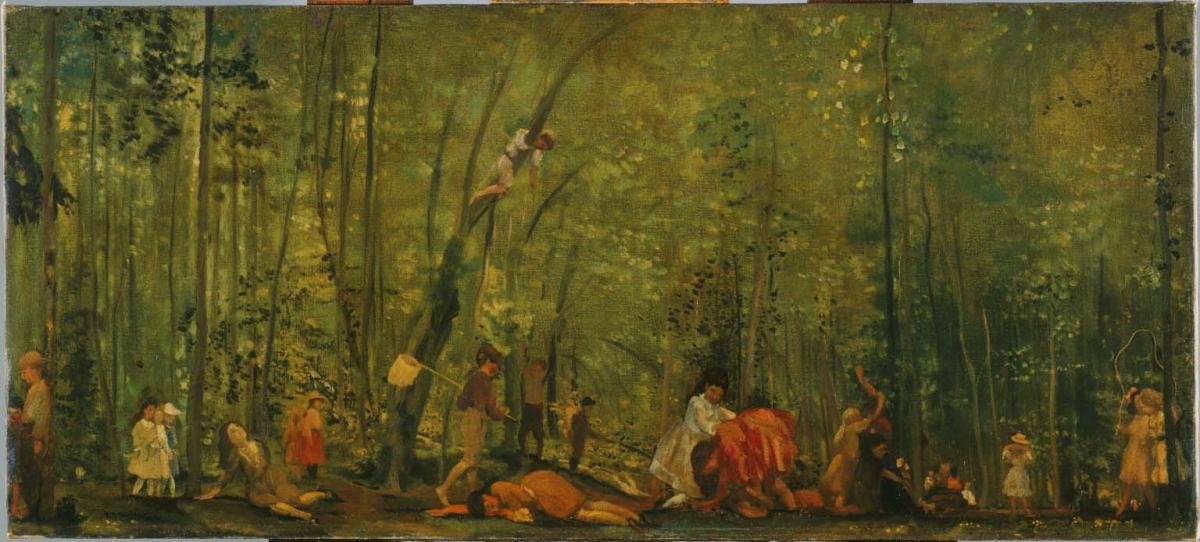Springtime of Delight
Arthur B. Davies ( 1906 )

Arthur Davies tried to evoke a sense of mystical wonder within his paintings. He had great affection and admiration for the Renaissance artists, particularly the Venetian school, and the work of El Greco. Though a staunch supporter and advocate of modern art, his own work rarely reflected these feelings, instead harking back to the classical traditions of the Renaissance and Greek and Pompeian frescos. When Davies executed Springtime of Delight in 1906, toward the end of his career, he sought to exemplify the qualities of previous artists and movements that he venerated most; this charming painting is akin to the lyrical landscapes of Giorgione and Titian.
In Springtime of Delight, Davies has captured a moment of dreamlike wonder, both in the subject matter, as well as with his delicate and airy brushwork. Davies has deftly depicted the lightness of spirit and laughter of the children romping in the woods. Duncan Phillips wrote, “In one adorable picture of little children playing in the woods, wild with delight over the return of spring, the twinkling little leaves seem to dance and sing while the rivulet scampers gaily over the rocks, and the tiny fish dart in and out of the shallows. Oh, to be a child again—like the little boy up the tree and the little girl rolling over and over.” This sweet painting of the delights of nature is one of the finest examples of Davies’s use of rhythmic color and line. Phillips later wrote that Davies was “one of the most exquisitely gifted of that long line of romantic poets who have expressed themselves not in words, but in lines and color.”